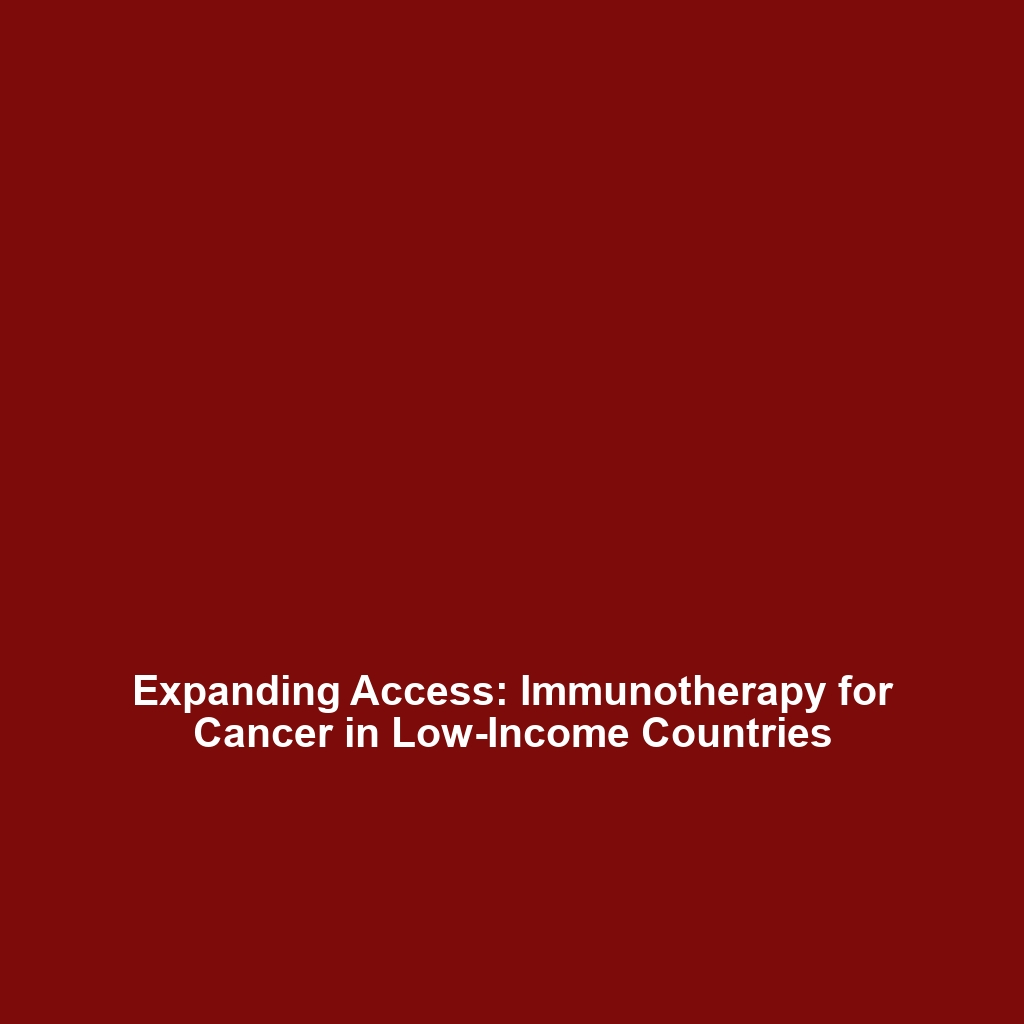How Cancer Cells Evade the Immune System Through Mechanisms Like Immune Checkpoints
Introduction
Cancer immunotherapy represents one of the most promising advances in modern medicine, employing the body’s immune system to eradicate cancer cells. However, a significant hurdle in this battle is how cancer cells evade the immune system, notably through mechanisms such as immune checkpoints. Understanding these mechanisms is critical within the context of immunotherapy and cancer treatment as it directly affects the efficacy of therapeutic strategies. This article explores the intricate pathways through which cancer cells exploit immune checkpoints to survive and proliferate, shedding light on their implications for the future of cancer treatment.
Key Concepts
Immune Checkpoints and Their Role
Immune checkpoints are regulatory pathways in the immune system that maintain self-tolerance and prevent autoimmunity. However, cancer cells often hijack these pathways to avoid detection and destruction. Key players in this process include:
- PD-1 (Programmed cell death protein 1): Present on T cells, it inhibits T cell function when bound to its ligand, PD-L1, which is often overexpressed in tumors.
- CTLA-4 (Cytotoxic T-Lymphocyte Antigen 4): This checkpoint downregulates T cell activation, further enabling cancer cells to escape immune surveillance.
By understanding how these checkpoints are manipulated, researchers can design more effective immunotherapies that counteract these evasion strategies.
Applications and Real-World Uses
How cancer cells evade the immune system through mechanisms like immune checkpoints has led to the development of several novel immunotherapeutic applications, revolutionizing cancer treatment. Notable examples include:
- Anti-PD-1 therapies: Such as Pembrolizumab (Keytruda) and Nivolumab (Opdivo), which have shown efficacy in various cancers, including melanoma and lung cancer.
- CTLA-4 inhibitors: Ipilimumab has been instrumental in improving survival rates among patients with metastatic melanoma.
These applications highlight how understanding immune evasion can lead to innovative treatments within the field of immunotherapy and cancer.
Current Challenges
Despite significant advances, challenges in studying and applying the knowledge of how cancer cells evade the immune system remain. Key issues in the field include:
- Variability in patient responses: Different patients exhibit differing responses to checkpoint inhibitors.
- Resistance mechanisms: Tumors may adapt to immunotherapy over time, diminishing treatment effectiveness.
- Identification of biomarkers: The need for reliable biomarkers to predict response to immunotherapy is crucial.
Future Research and Innovations
Future research is focused on overcoming the limitations of current therapies by exploring new strategies and technologies. Significant areas of innovation include:
- Combination therapies: Merging immune checkpoint inhibitors with other treatment modalities, such as targeted therapies and radiation.
- Next-generation checkpoint blockers: Developing agents that can target additional immune checkpoints, such as TIM-3 or LAG-3.
- Personalized immunotherapy: Tailoring treatments based on individual tumor profiles and immune characteristics.
These innovations hold the potential to enhance the effectiveness of immunotherapy in the fight against cancer.
Conclusion
In summary, understanding how cancer cells evade the immune system via mechanisms like immune checkpoints is crucial to advancing immunotherapy and combating cancer more effectively. The insights gained from this research not only inform current treatment strategies but also pave the way for future innovations. Continued exploration of these mechanisms is essential for improving patient outcomes in cancer therapy. For further reading, you may explore related topics such as Current Research in Immunotherapy or Treatment Options for Cancer Patients.





